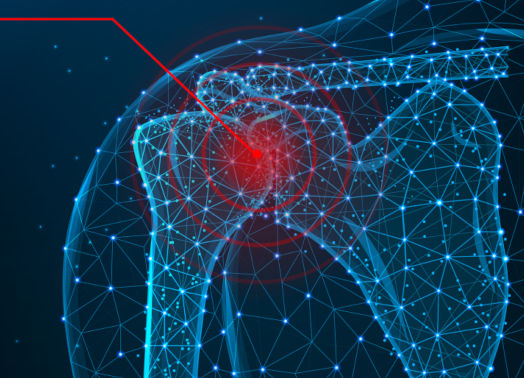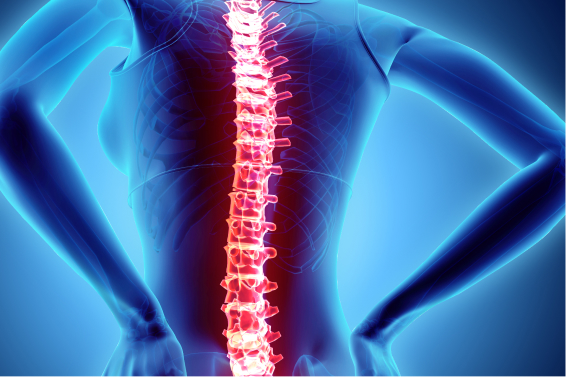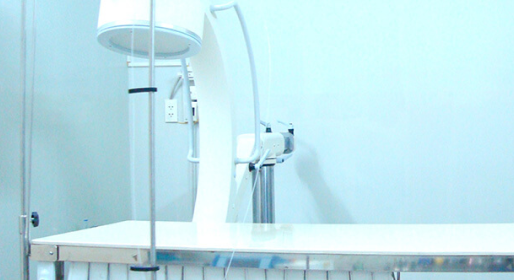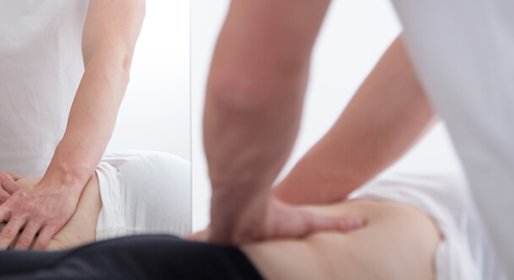Treatment of hip pain in Munich
Hip
Diagnosis of hip pain in Munich
At the beginning, the focus is on a detailed discussion with the patient about the medical history and causes. This is followed by a detailed clinical examination with a movement check to determine the exact extent of the functional impairment. In many cases we use what are known as imaging procedures; these are helpful to consolidate the diagnosis. Ultrasound (sonography), x-rays, magnetic resonance imaging (MRT) or computed tomography (CT) are available. We then create a therapy concept that is individually tailored to the patient and initially focuses on the broad spectrum of conservative treatment options. This will usually treat you effectively and safely for most hip complaints.
Your advantages at OrthoCenter Munich
- Orthopedic treatment focus on spinetherapy
- Wide range of conservative and operative procedures
- Gentle procedures in focus: Dr. Riedel specializes in gentle pain therapy. He was head physician in various pain clinics for over 20 years
- Joints and surgical expert: Prof. Dr. Lill specializes in the treatment of joints. He has years of experience in the field of minimally invasiveand arthroscopic ops.
- Cooperation with clinics and research institutes worldwide
- Renowned private practice: the OrthoCenter is internationally known and repeatedly welcomes patients from abroad who come to Munich for treatment
Hip arthritis or coxarthrosis
Causes, Symptoms & Diagnosis:
A person’s hip is in use for their entire life and is subject to heavy loads and excessive wear. Over time there may be a natural wearing down of the acetabulum (the socket of the hip joint) and the cartilage in the joint, leading to hip arthritis. Hip arthritis can also be caused by free-floating bits of cartilage or bone that are stuck in the joint, but this can disappear over time. In each case, hip arthritis will present with the same typical symptoms.
Affected patients will first notice slight pain in the hip or groin area when taking part in physical activity. Over time, though, this pain will appear when inactive. The natural range of movement in the hip may also be restricted. For an accurate diagnosis of the hip, an x-ray will be taken and will offer insight into the progression and degree of the arthritis. Immediately following a diagnosis, the patient will be put on a treatment course including therapeutic measures. Deterioration of hip arthritis – which could ultimately lead to necrosis of the femoral head – can only be prevented by such treatment.
Treatment:
There are many ways to treat hip arthritis. These depend on the progression of the disease. With the help of drugs, pain relief can be provided. Overweight patients should lose weight in order to reduce the stress put on their hips. An advanced case of coxarthrosis may need to be treated surgically. In most cases, a hip arthroscopy is performed to remove damaged cartilage, or open surgery may be carried out to insert an artificial joint.
Hip avascular necrosis
Causes & Symptoms:
The cause of femoral head osteonecrosis is a circulatory disorder of the bone. It generally occurs because of a disorder relating to lipid (fat) metabolism, but may also be caused by high levels of alcohol consumption or cigarette smoking. In addition, accidents and injuries can be at the root of femoral avascular necrosis. This painful disease first causes severe discomfort in the hips and groin. If left untreated, hip arthritis may develop.
Treatment:
To avoid serious damage to the hipbone, treatment should begin right after diagnosis. There are several options: relief of pressure on the diseased hip via orthopaedic devices, medication to increase circulation or/and surgery on the affected hip. The type of treatment will depend on the degree of the disease. The so-called Pridie drilling is intended to stimulate cartilage regeneration. If the bone exhibits deformities, these may be addressed during surgery. If the necrosis is severe, a replacement joint may be inserted.
Hip impingement syndrome
Causes & Symptoms:
Hip Impingement Syndrome – also called Femeroacetabular Impingement – is characterised by reduced hip mobility. Generally the top of the femur, or femoral head, makes contact with the hip socket, or acetabulum. This causes damage over time and if left untreated, the patient can be sure to develop arthritis in the hip joint. Pain in the groin area is typical of this type of condition. Symptoms of hip impingement can also include pain from prolonged sitting or reduced mobility based on the patient’s avoidance of painful movements. To avoid the formation of additional conditions, treatment of the hip should be undertaken immediately.
Treatment:
To relieve pain associated with hip impingement, physical therapy and medication will be prescribed. Treatment will include electro-therapy as well as the placement of mudpacks over the affected joint. Normally, though, surgical intervention is unavoidable. To prevent further damage and therefore an advanced case of hip impingement, arthroscopic (keyhole) surgery may be deemed necessary. This type of procedure is generally uncomplicated. The pain previously experienced will be greatly reduced or completely relieved. The development of secondary conditions, such as arthritis, will be slowed or completely stopped. Stinging pain in the hip or groin area can indicate a case of hip impingement. To avoid severe complications an immediate examination of the cause is essential.
Hip labral tears
Causes & Symptoms:
The labrum or the acetabular labrum in the hip joint is a round, three to four millimetre wide bulge of the acetabulum. A tear to the labrum often occurs during sports but also because of repetitive monotonous activities. A tear can be recognised by the sharp pain or pinching sensation it causes in the hip. The natural ability to move the hip is reduced. Even with special imaging tools, a tear in the labrum can be hard to detect and diagnose. A clear diagnosis can only be made by conducting a pain-inducing test or by arthroscopic (keyhole) means. The treatment options for this condition depend on its severity.
Treatment:
Mild cases of a labral tear can be treated with injections or by specially tailored physical therapy programmes. In the case of a rupture or major tear, surgery is an option. This would be done arthroscopically or via traditional surgical methods.
Loose bodies
Causes & Symptoms:
Free-floating fragments lead to a restriction of movement in the hip joint. In the early stages, they do not cause any pain, because the affected joint area is insensitive to pain. Early diagnosis is therefore extremely important to prevent damage to the joint.
If free-floating fragments are found between the femoral head and the acetabulum, the patient may begin to experience restricted movement in the hip joint. Due to constant movement and pressure, this fragment may disappear over time. However, it can also lead to the creation of more loose fragments. This will surely lead to excessive wear on the joint. It is only at this stage that a patient will begin to complain of hip pain. Prompt treatment will then be necessary.
Treatment:
Bone and cartilage fragments can usually be detected either by x-ray or MRI. Even if nothing can be seen, the possibility of their existence will lead to an arthroscopic diagnosis. Within this framework, the fragments will be removed from the joint. If the fragments have caused any damage to the joint and the remaining cartilage, additional reconstructive measures may need to be taken.
Hip bursitis
Causes & Symptoms:
Wether from mechanical overload, too much pressure or bacteria: bursitis of the hip can have many causes. Patients usually complain of pain in the hip and groin, which increases when putting weight on the affected limb. X-rays and other diagnostic imaging procedures provide information about the nature and extent of the disease. There are a variety of treatment options that can help to relieve the symptoms of bursitis.
Treatment:
Successful treatment begins by determining the cause of the disease and the source of the inflammation. Subsequently, steps will be taken to allow the inflammation to subside. Injections can help with this as well as other medications. Electro-therapy, ultrasound, mudpacks and other therapies are effective in treating bursitis. The same goes for physical therapy exercises that help strengthen the muscles of the hip.
Hip inflammation
Causes & Symptoms:
To a greater extent than other hip problems, patients with hip inflammation will notice the pain that goes along with the hip’s inflammation. Patients experiencing hip inflammation will begin to walk with a “rolling” gait, as walking normally would cause too much pain. Fever, fatigue and heart palpitations accompany bacterial hip infections. Immediate medical attention should be sought.
Treatment:
The first step in treating hip inflammation is to immobilise the leg in a position that causes no pain in the hip. Antibiotics will be administered in cases of a bacterial infection in order to prevent the formation of pus. An untreated case of bacterial hip inflammation will lead to massive damage to the hip joint. Surgery will certainly be required in these cases. The goal will be to remove the pus build-up by puncturing the joint.
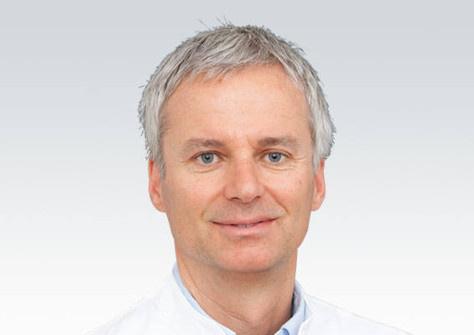
Your hip specialist Prof. Dr. Lill
YOUR CONTACT FOR HIP PAIN
Your hip pain has come to an end! Contact renowned surgeon Professor Lill today to schedule your examination appointment. He is looking forward to meeting you!

